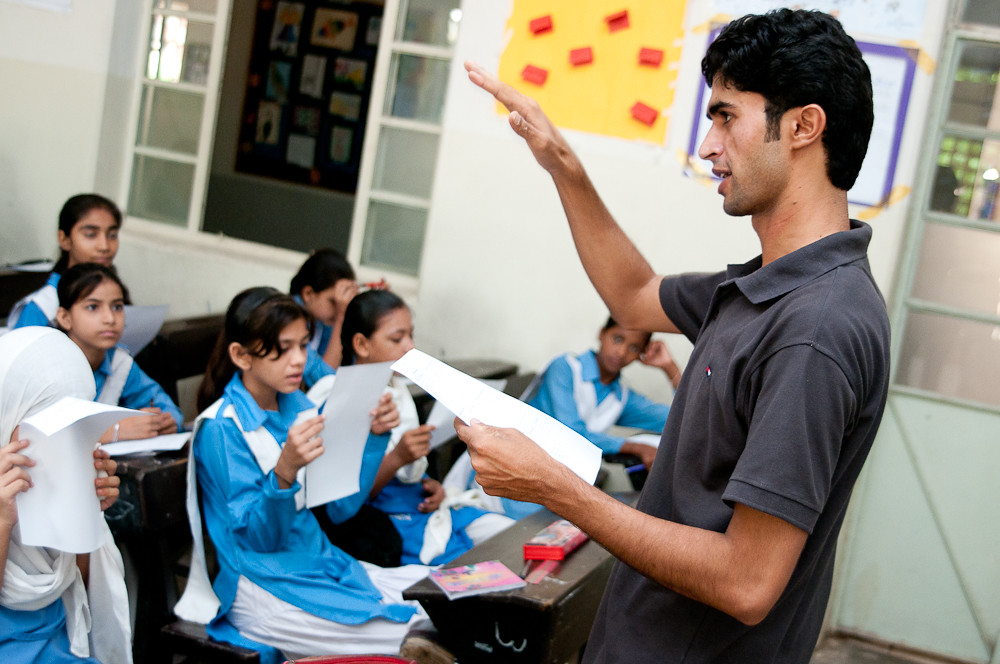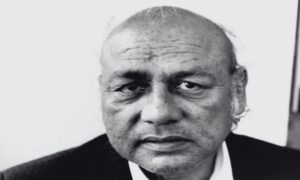Sania Nasir
“A good student is a good reproducer of knowledge that he or she has been taught; a good student maintains discipline and performs excellently in exams.”
During the data collection of my dissertation I was amused when I heard this response from a teacher during an interview in 2019. Then I realized this definition is mostly endorsed by educational institutes even in 21st century. Currently, while there are hundreds of educational initiatives in Pakistan and an equal number of philanthropic strategies designed are being taught to teachers to improve our education system, students still are viewed as passive vessels. Brazillian philosopher Paulo Friere, in his book Pedagogy of Oppressed, calls this as ‘narration sickness.’
Friere criticized the education system after analysing the teacher-student relationship and revealed that “the education system is suffering from narration sickness.” He explained that there are narrative characters; subject (teacher) and object (students). The role of the teacher is perceived as a narrator which implies that the students listen to teachers’ stories and are expected to memorize the narrated content which in no way takes into consideration students’ experiences and their consultation. It is believed that the more teachers fill the containers (students), the more they are achieving the goals and becoming successful teachers. Other characteristics include the teacher-knows-everything trope and students know nothing; teachers talk and students listen meekly – and teachers have complete authority over their students. This not only causes a power difference in which one group (teachers) and dominates the other (students) but also promotes appalling injustices in access to social, economic, and cultural expression.
Our education is filled with holes and mistruths due to the government-controlled syllabus. Students are taught to only focus on the facts, figures, and numbers. Through this educational approach, students are dehumanized and are molded into public approved homogenous individuals who cannot think outside the prescribed consensus and question authorities. Students are assumed to reproduce the knowledge instead of learning critical thinking skills. As a result, the balance between teacher-student is excessively disrupted, students’ creativity is killed and the view gets promoted that to remember is intelligence and truth comes from authority. In like manner, the institutes fail to produce any change agents and end up producing the individuals who are adaptable and manageable to the existing system and maintaining the status quo. For those in power, this is an ideal form of teaching to keep the status quo. Perhaps that is the reason we are not teaching students to rethink the system, recognize the injustices, and find solutions to eliminate them. Even if one tries to move from traditional to transformative teaching practices are discouraged by the authorities.
For instance, a well-known academic and youth activist Ammar Ali Jan was accused of giving unnecessary encouragement to students due to which the students were becoming needlessly vocal and was told by authorities to disengage from teaching. Similarly, a professor teaching at a Government University of Pakistan, Zagum Abbas was fired due to the reason that he was creating a culture of dialogue and engagement and was teaching students to question authorities. This situation depicts that not only teachers but the overall structure also influences the way students are taught in the classroom and collectively we must resist the traditional education system.
Education as a practice of domination, of standardization, and productivity, has not always been the status quo. Many pre-colonial modes of education focused on modelling, active participation, storytelling, and engaged young people in a community-centred process that did not create stark boundaries between their classroom learning and the communities. When the need is, the community might be the classroom, and where the assessment was used, it is not meant to be punitive or to stratify students into arbitrary cohorts of success and failures. It was used as a tool for feedback to help students evaluate their work. But with the time, due to class-based society, the education system substantially changed. Since then, in most countries, it has remained the same in the last years because it emerged out of the development of capitalism and was constructed to serve their needs. It teaches young people not to think critically. History lessons are brushed over that might make young minds question the status quo. But it is high time to unlearn the toxic and colonial practices to give a better future to our students.
Dialogue-based teaching has been emphasized by Paulo Friere to interchange the role of teacher and student. Dialogue based teaching has been defined as a forum where individuals exchange information face-to-face, share personal stories and experiences, honestly express perspectives, clarify viewpoints, and develop solutions to community concerns. During this approach, both teachers and students have the opportunity to share and learn from each other. It encourages humility, critical thinking, and personal growth. Both teachers and students grow and are part of the process. Therefore, educational institutes need to include this approach in curriculums so that we can bring change in true sense.
Friere also gave importance to the problem-posing approach. During this approach, a teacher or a student poses a problem and the class collaborates and works together to find answers. The teachers and students are assumed as co-investigators. Through problem-posing education, students and teachers both develop their power to perceive critically the way they exist in the world with which and in which they find themselves; they come to see the world not as an objective reality, but as a reality in process, in transformation. This approach promotes diverse, flexible thinking, and responsible learning.
Finally, according to various research studies inquiry-based approach is effective in promoting democratic education. It invites students to explore academic content by posing, investigating, and answering questions. During this approach, teachers stimulate learning with a question or issue and thereby engaging students in constructing new knowledge and understanding. Teachers are considered as facilitators of learning. While students are self-directed and active learners. This approach allows students to take ownership of their learning; it fosters creativity among students, and enable students to think beyond the content presented in the textbook.
Education institutions must ensure that they remain responsive to the needs and demands of students as they are responsible for shaping future education institutions. In this era of high-stakes testing, these approaches are far more worthwhile for students than the traditional rote learning approaches. Students are unlikely to be able to recall all of the rote-learned facts they were taught before the test, but if they have been engaging in these approaches, they are likely to be able to figure out the answers.
“What would it look to permanently decouple student’s learning and achievement from the traditional and colonial perspective?” is a question teachers must frequently ask themselves. Students deserve a better future and a better future is possible.
The Students’ Herald News Desk focuses on reporting the latest news regarding student politics and campus updates to you.
The News Desk can be reached at admin@thestudentsherald.com




